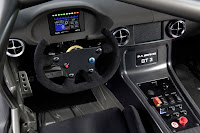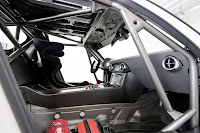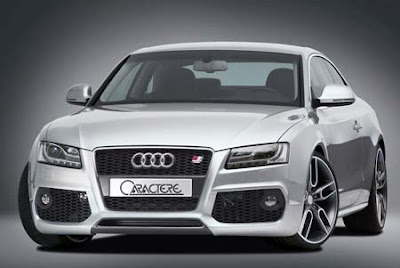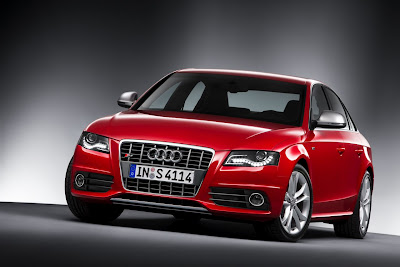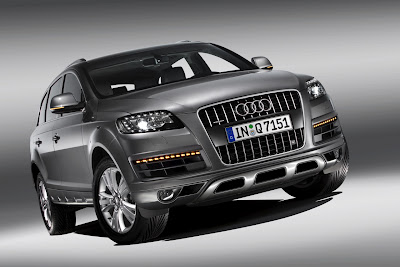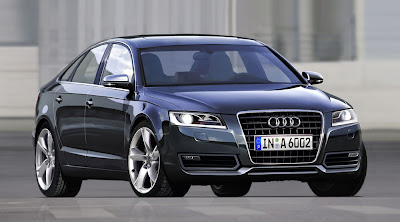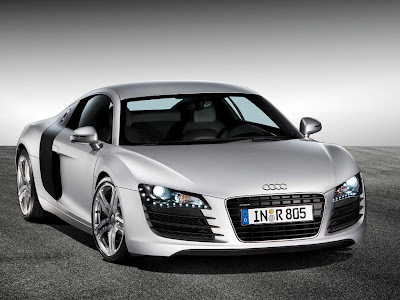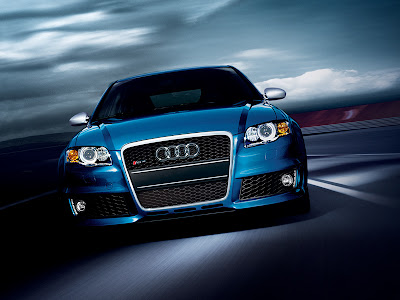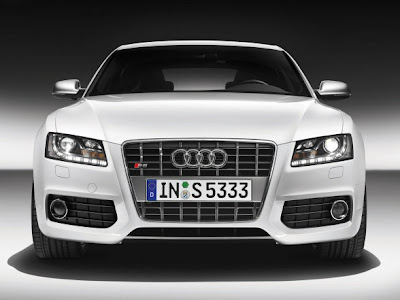
With just 20 produced, each 1 Million Euro (without taxes) Lamborghini Reventón is a symbol of extreme exclusivity, yet still offering the extraordinary performance that makes the Reventón so unrivalled: under the completely autonomous design, the Reventón possesses the entire technical and dynamic competence of the twelve cylinder Lamborghini.

Lamborghini prides itself on being the extraordinary manufacturer of extreme super sports cars without compromise. Sensuality and provocation characterise every Lamborghini, with an aggressively innovative style. "However, the Reventón is the most extreme of all, a true automotive superlative. Our designers at the Lamborghini Style Centre took the technical base of the Murciélago LP640 and compressed and intensified its DNA, its genetic code," affirms Stephan Winkelmann, President and CEO of Automobili Lamborghini S.p.A.
Born in Sant'Agata Bolognese
The Lamborghini Reventón has been entirely designed in Sant'Agata Bolognese, the original birthplace of the Lamborghini and the native home of every super car born under the sign of the bull. The design drawn up in Lamborghini's Centro Stile (Style Centre) is fine-tuned in close collaboration with the Lamborghini Research and Development Department. Thus, the Reventón is not only "haute couture" but it also stands out for its elevated dynamism whilst being entirely suitable for every day use.

The Lamborghini Reventón is not destined to remain a one-off. A total of 20 Lamborghini friends and collectors will be able to own this extraordinary car and, naturally, enjoy the incomparable pleasure of driving it.
The name Reventón has been chosen according to Lamborghini tradition. Reventón was a fighting bull, owned by the Don Rodriguez family. It is included in the list of the most famous bulls ever and is known for killing the famed bullfighter Felix Guzman in 1943.
Characterised by coherent functions
Naturally, both doors on the Reventón open upwards - since the legendary Countach this has also been a symbol of the V12 Lamborghini product line. With their asymmetric configuration, the large air intakes below the doors provide an example of the extreme coherence with which a Lamborghini fulfils its function: on the driver's side it is large to increase the flow of oil to the radiator. On the passenger's side of the vehicle, the air intake is flat because in this case, it only has to ensure the flow below the floor. The aerodynamically optimised flat floor structure terminates at the rear with a diffuser featuring an accentuated shape. This guarantees excellent road grip and stability even at 340 km per hour.

In spite of the extreme and innovative language of its shape, the Reventón not only maintains all the strong features of the Murciélago LP640, but also offers further amelioration in terms of aerodynamics, the important engine cooling system, the air intake system and brakes. The airflow and the section of the variable geometry air intakes of the engine and the rear spoiler (also adjustable) have been modified.
Owners of the 20 examples will be able to test the performance of his or her Lamborghini in person.
Perfected to the ultimate detail
The engine hood made of glass laminate with open ventilation slits offers a glimpse of the beating heart of the twelve cylinders of the super car. The glass also features the marked arrow angle that characterises the design from the front to the rear spoiler. The Lamborghini designers' love for detail is beautifully illustrated by the fuel tank lid: a small mechanical work of art, achieved by milling a solid aluminium block.

The combination lights transform the incisiveness of the design into light: the front features the most modern light-emitting diodes alongside Bi-Xenon headlights. Seven LEDs ensure continuous daylight while there are a further nine diodes for the indicator and hazard lights. Another technical innovation is found in the rear light LEDs. Because of the high temperature in the rear low part of the car, special heatproof LEDs are used for the indicator and hazard lights, stoplights and rear lights with a triple arrow optical effect.
A new body colour

Naturally, such a refined language of shape also demands an extraordinary colour. For the 20 examples of the Reventón, the designers from Sant'Agata Bolognese have created a totally new hue: Reventón, a mid opaque green/grey without the usual shine. However, thanks to the metallic particles, in the daylight this colour tone features surprising depth.
Opaque and brilliant colours for the wheel rims

This play of opaque and lustre is also featured on the wheel rims, especially created for the Reventón. Opaque carbon fins are screwed onto the black aluminium spokes, not only creating a visual effect with the precision of a surgeon's scalpel, but a turbine effect also ensures optimum cooling for the powerful ceramic brake disks.
TFT display similar to an airplane
The same innovative force applied to the exterior design characterises the cockpit of the Reventón. Designed and created using Alcantara, carbon, aluminium and leather that comply with the top quality standards, the interior is inspired by the next generation cockpits: just like in modern airplanes, the instruments comprise three TFT liquid crystal displays with innovative display modes. At the touch of a button, the driver can choose from two vehicle information display modes. The instruments are housed in a structure milled from a solid aluminium block, protected by a carbon fibre casing.

The G-Force-Meter is also completely new: this display shows the dynamic drive forces, longitudinal acceleration during acceleration and braking, as well as transversal acceleration around bends. These forces are represented by the movement of an indicator on a graduated 3D grid depending on the direction and intensity of the acceleration. A similar instrument can be found in the airplanes. Formula One teams also use a similar device to analyse dynamic forces.
Atelier of creativity and high efficiency
 Inaugurated in 2004, the Centro Stile is dedicated to design and characterised by a high degree of efficiency: an "atelier" of creators, designers and prototype constructors, who encapsulate the Lamborghini culture and spirit by using their remarkable skills to create aesthetic innovation.
Inaugurated in 2004, the Centro Stile is dedicated to design and characterised by a high degree of efficiency: an "atelier" of creators, designers and prototype constructors, who encapsulate the Lamborghini culture and spirit by using their remarkable skills to create aesthetic innovation.The Centro Stile is located in a 2,900 square two-storey building. The large pavilion houses two test floors and related production and analysis equipment, while other rooms are set aside for the most advanced computerised workstations for designers and a style-model construction workshop. The Centro Stile is also closely linked to the nearby Engineering Department: the direct line between the Lamborghini development departments guarantees that ideas rapidly become reality.
Creativity and production under the same roof

The Lamborghini Reventón is a practical illustration of the streamlined functionality and efficiency characterising the Centro Stile: it took less than a year to progress from the first ideas to the finished car. The complete design process from the first sketches on paper, to three dimensional computer models with 1:10 or 1:4 scale, right up to the real size prototype is organised around streamlined, fast, efficient work groups. Thanks to the Centro Stile, for the first time in its history, Lamborghini is now able to create its own style philosophy in-house without having to rely on any external collaboration.
The 20 units will be manufactured in Sant'Agata, using a production process characterised by artisan perfection and rigorous quality standards.
A masterpiece with tested technology

The technology found in the Murciélago LP640 has not been modified. The engine in the LP640 forwards is the classic twelve-cylinder engine with 6.5 litre displacement. Only for this car, Lamborghini guarantees, an astounding 650 HP (478 kW) at 8,000 revolutions per minute (rpm). The huge torque, equal to maximum 660 Nm, ensures a powerful switch from any number of revolutions: even the slightest pressure on the accelerator is spontaneously transformed into thrust. The robotised e.gear changes gear faster than even the most expert driver. In addition, the permanent Viscous Traction four-wheel drive system ensures that every force is constantly translated into movement.
As in the original Murciélago LP640, the Reventón accelerates from 0 to 100 km/h in just 3.4 seconds, with a maximum speed over 340 km/h.
Born to become a legend
Since its foundation, Lamborghini has been a creator of trends in the world of sports cars and has always manufactured cars with an absolutely unmistakable character. Models such as the Miura or Countach, for example, were veritable forerunners and rapidly acquired the status of timeless classic cars. From the moment they are launched, every new Lamborghini promises to become a legend, destined to become a sought-after and precious possession.

With the Lamborghini Reventón, Lamborghini has done it again; it has created an unequalled super car; the perfect synthesis between the exclusivity and appeal of a limited edition design masterpiece, and the dynamism and driveability of a standard sports car. Thus, the Lamborghini legend is further enhanced by another, stylish future classic.
Lamborghini Reventón - Technical data
* Frame
- High strength tubular steel structure with carbon fibre components.
- In carbon fibre, except roof and door external panels (steel)
- Type: Mechanical (rack and pinion) power-assisted
- Right-hand turning circle: 12.55 m (41.17 ft)
- Front: 245/35 ZR 18
- Rear: 335/30 ZR 18
- Type: 12 cylinders at 60°
- Bore and stroke: 88 mm x 89 mm (3.46 in x 3.50 in)
- Displacement: 6496 cc (396.41 in3)
- Compression ratio: (11 ± 0.2):1
- Maximum power: 650 HP (478 kW) at 8000 rpm (guaranteed through the engine selection)
- Maximum torque: 660 Nm (487 lb-ft) at 6000 rpm
- Engine position in vehicle: Longitudinal central-rear
- Cylinder heads and engine block: Aluminium
- Intake system: Variable geometry with 3 operating modes
- Top speed: 340 km/h (211.3 mph)
- Acceleration 0-100 km/h (0-62 mph): 3.4 s (before: 3.8 s)
- Urban: 32,3 l/100km
- Extra-urban: 15,0 l/100 km
- Combined: 21,3 l/100 km
- CO2 emissions: 495 g/km


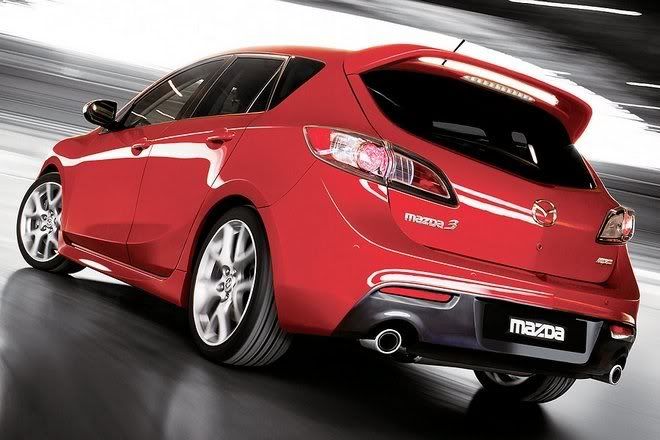 Ford is adding a stability and roll over protection system to their Ford Ranger pickup. This system greatly reduces the chance of a roll over. In addition, the 2010 Ranger will also get side-impact airbags that offer better protection in a side impact collision.
Ford is adding a stability and roll over protection system to their Ford Ranger pickup. This system greatly reduces the chance of a roll over. In addition, the 2010 Ranger will also get side-impact airbags that offer better protection in a side impact collision.














